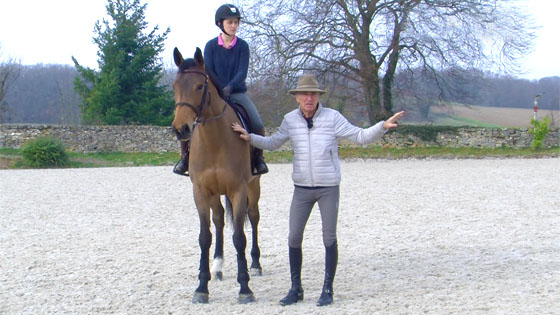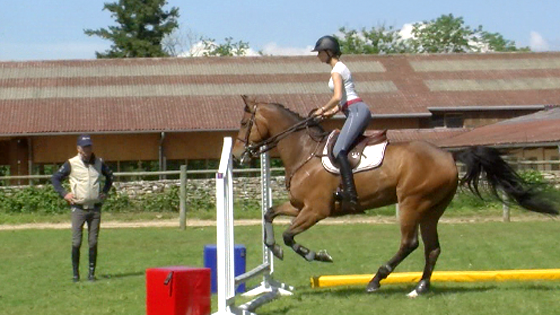Learn how to control your mind when approaching a fence

The primary goal of this session is to get the rider and horse to reach a state of serenity. Michel has developed an exercise helping riders to become aware of the moment they lose control of their mind and of their actions approaching a fence.
It is well known that the closer the rider is from the fence, the more the emotions or interfering thoughts are taking over which disturbs not only the rider’s position but consequently the horse’s mind and the quality of his canter.
The primary goal of this session is to get the rider and horse to reach a state of serenity. Michel has developed an exercise helping riders to become aware of the moment they lose control of their mind and of their actions approaching a fence.
This exercise is shown on the sheet M6 of the Training program 1
For this new lesson, Michel teaches Charlotte who rides Bounty, a quite inexperienced 5 Year Old mare.
The exercise begins with riding in between the fences preparing for all the key elements that will lead to a successful jump: a rider in control of her mind and her horse’s mind, well seated with a steady canter and a straight mare.
Michel’s professional eye detects any interfering movement from the rider and its influence on the horse. We can see that a good landing is the results of a good approach. Therefore, the rider has to plan each phase of the jump constantly.
We will also notice how sensitive a horse is to the slightest disturbance of the rider’s mind. During this session, Charlotte will have to face a situation leading her to become confused. Her hesitation will impact the mare’s behaviour who will take the control over and decide for her rider.

